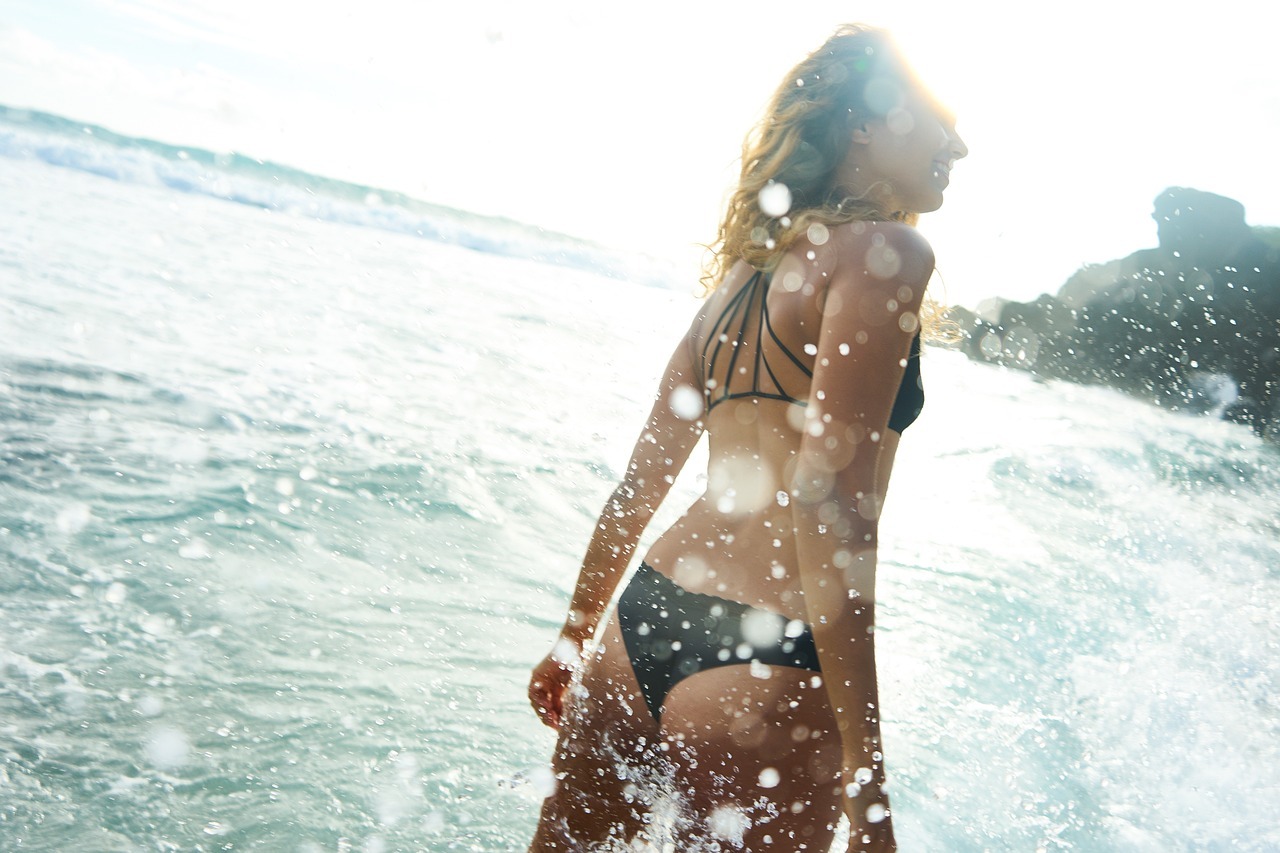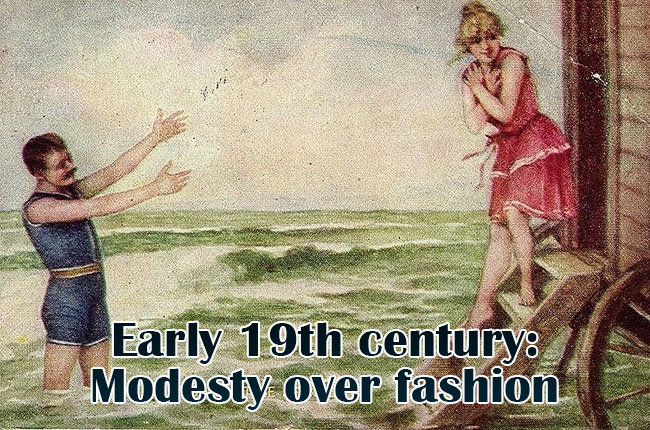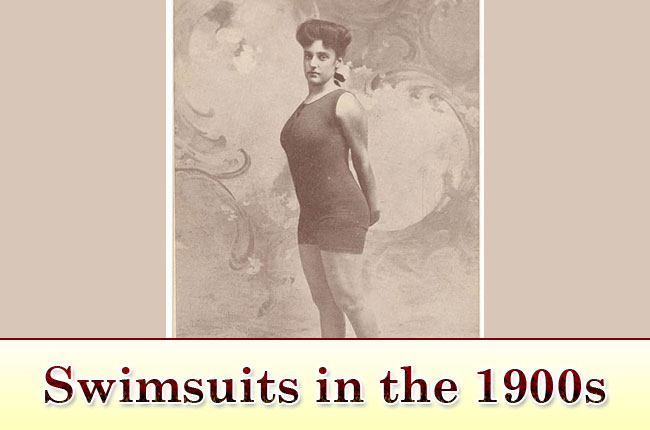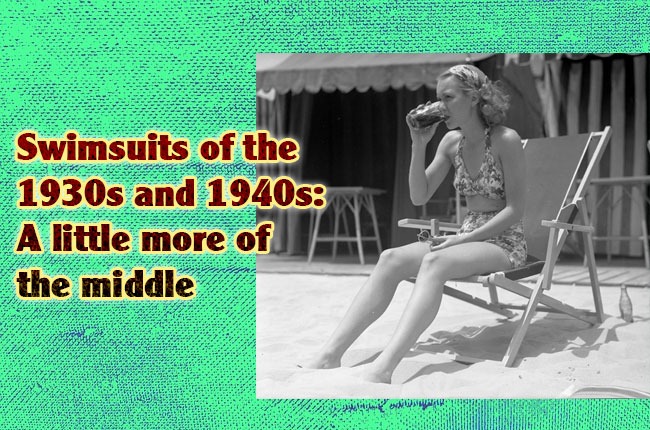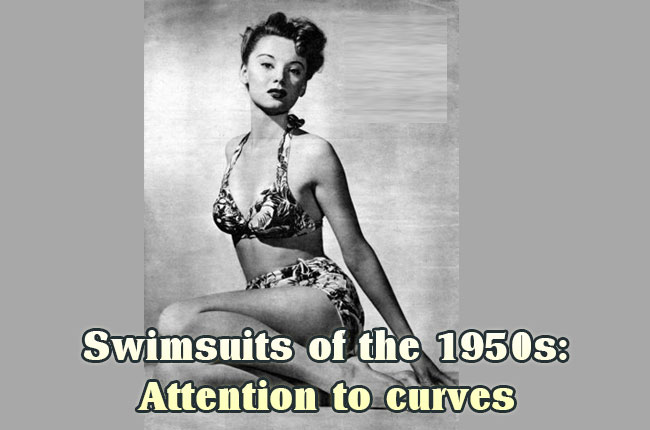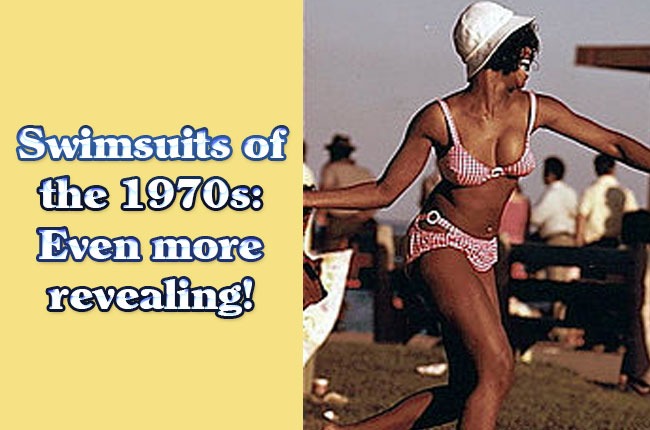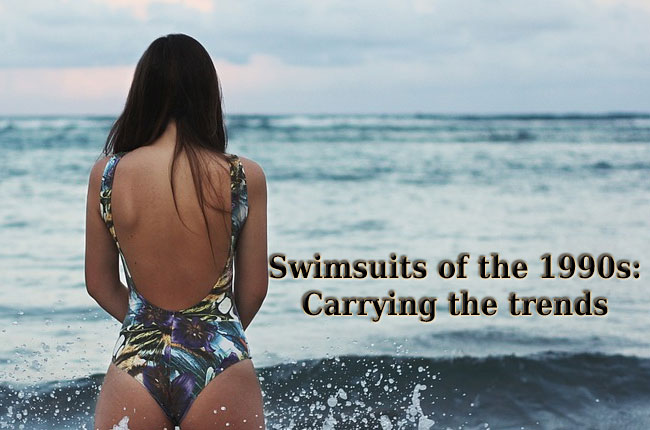It was during the late 18th to early 19th century that spending time at the seaside came to be considered as a form of leisure and relaxation. The need arose for proper wear for the beach, and the use of swimwear began. Take a look in this gallery at how swimsuits have evolved through the years.
Bathing at the sea was already a popular activity during the late 1700s and early 1800s but women were still required to wear conservative clothing. It was seen as proper to show as little skin as possible, not just for modesty but also for protecting their fair complexion from the sun. Women then wore long dresses, shawls, and bonnets. The hems of their skirts were especially sewn with weights to keep their dresses from floating in the water and thus showing their legs.
Bathing machines began to be widely used during that time. They were like small huts on wheels that allowed people (especially women) to change their normal clothing into swimsuits in private.
It was still the Victorian Era so swimsuits during the mid-1800s were still conservative, covering much of the feminine parts. The long bloomers were quite much in use, clearly influenced by feminist Amelia Bloomer’s groundbreaking ideas for women’s clothing. Like the earlier swimsuits, the mid-19th-century swimsuits were made of heavy material to prevent their dresses from floating.
Swimsuits during this time somewhat changed from the early models. The swimsuits were typically black, knee-length and with puffed sleeves and a sailor collar, usually worn over bloomers decorated with bows and ribbons. Accessories to go with the dress included black stockings, lace-up beach sandals, and caps as well as sun hats.
More and more people were flocking to the beach to swim, surf, sunbathe and dive. Women no longer felt the fear of being arrested by showing their arms or legs on the beach. They had really started to swim in the waters. Women also began to join several swimming competitions, so more functional swimwear was in order. Since the early Victorian-style swimsuits proved to be burdensome for swimming, swimsuits during that era offered more mobility but still remained much more conservative than later swimwear.
By the 1910s swimsuits used significantly fewer yards of fabric compared to the cumbersome Victorian counterparts. The bathing skirts and bloomers were pared down to allow much more mobility as well as exposure to the sun. By the 1920s billowy swimwear was totally out and more one-piece suits were in. These newer swimsuits were much closer to the skin, thus there was no way to camouflage the feminine curves. Here is an iconic picture of Australian swimmer and actress Annette Kellerman in her famous one-piece swimsuit.
The swimsuits of the 1930s and 1940s had morphed into a more recognizably modern style. The 1930s swimwear was now made of newer materials such as latex, to provide more flexibility when swimming. The one-piece swimsuits were now cut to expose the midriff. That’s a picture of actress Claudette Colbert in a swimsuit during the 1940s.
The bikini actually emerged during the 1940s, when French designer Louis Reard created it. Sure, there had been two-piece swimsuits already, but the bikini caused a quite an uproar because it was revealing — for instance, the navel was exposed. Reard could not find a fashion model willing to wear his skimpy creation, so he hired a nude dancer named Micheline Bernardini as a model.
Every woman at that time adored Marilyn Monroe and wanted to have a curvy body like hers. That’s why swimsuits of the 1950s had more built-in support (such as a corset function) in them in order to attain the curvy figure, flatten the tummy and give the breasts more support — all these while providing security in the water. Because these swimsuits during that decade had low legs, they were modest compared to the swimsuits of the previous decade.
When the bikini first emerged in the 1940s, it caused quite an uproar. But during the 1960s, the bikini made a successful comeback and thus became more popular. It was not shocking anymore to see girls wearing these skimpy two-piece suits on the beach; they became an acceptable, common sight.
The shy attitude towards swimsuits was forever changed due to the sexual revolution of the late 1960s and early 1970s. Bikini tops were becoming a lot more like bras now. Having bronzed skin mattered more than ever, and so showing more skin was more acceptable. There was definitely less use of fabric as string bikinis were introduced and the bottoms were more high-cut.
During the late 1970s, the one-piece swimsuit came back, but they also became more high-cut, accentuating the hips.
Despite shying away from the two-piece bikinis, the one-piece suits of the 1980s were just as revealing and sexy. Swimsuits of the 1980s typically featured considerably higher cuts and plunging necklines as well as scooped backs. Neon-colored swimsuits were all the rage way back then.
Here in this picture is supermodel Paulina Porizkova is seen wearing a one-piece swimsuit in the 1980s.
Swimsuits of the 1990s continued the high-waist trends of the 1980s. But 1990s swimsuits were even more revealing, exposing much more butt and “side-boob” so there was little left to the imagination. Here is model Cindy Crawford during her prime in the 1990s.
From the onset of the 21st century to the present, women have enjoyed wearing various types of swimsuits, from one-piece, two-piece, or monokini. Many of these swimsuits come in different designs and materials, including metals and beads. Wearing swimsuits became more fashionable than ever before.

